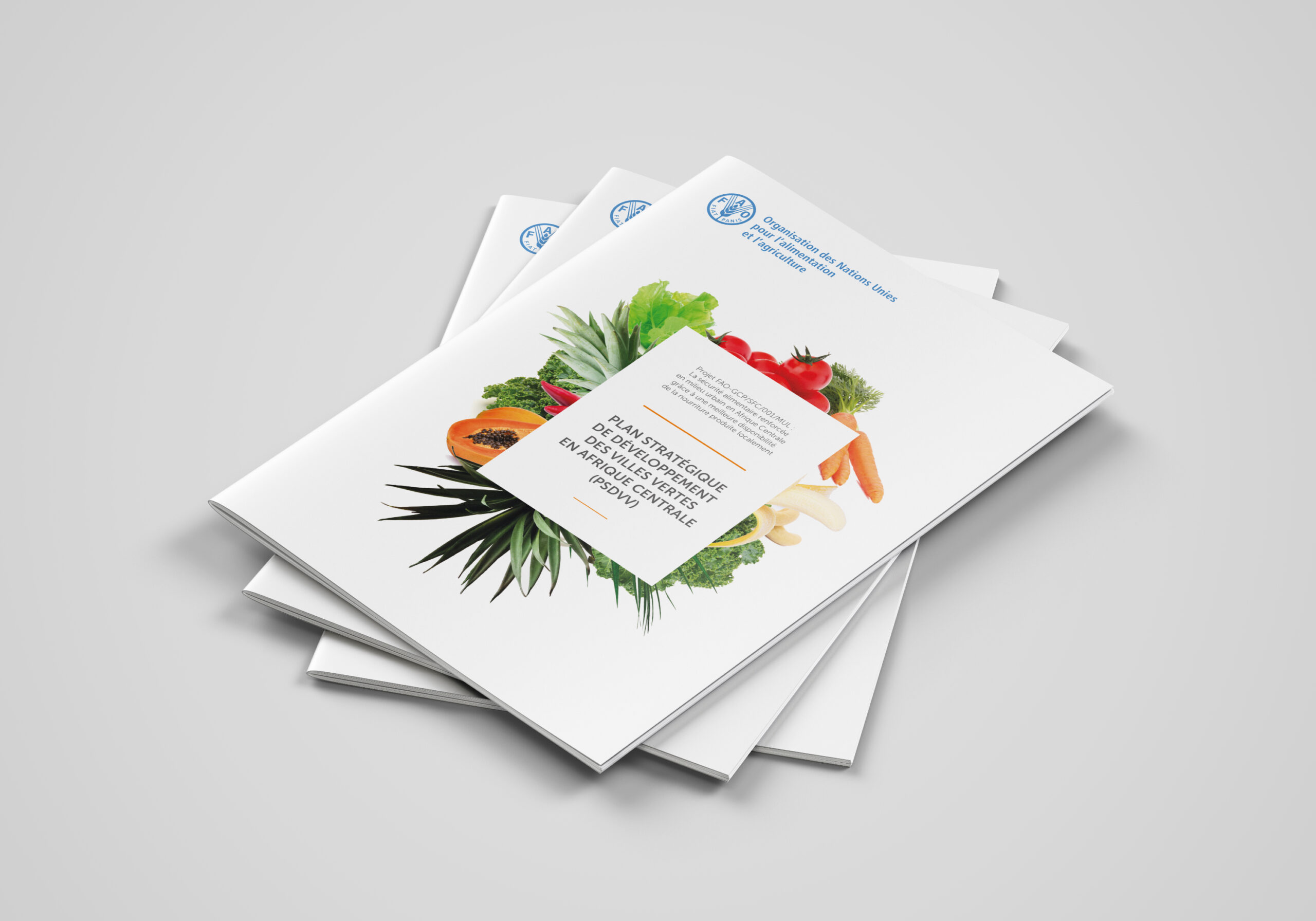Food and Agriculture Organization of the United Nations (FAO), 2018



Context
The Strategic Development Plan for Green Cities in Central Africa is part of the project GCP/SFC/001/MUL titled “Enhanced Food Security in Urban Areas of Central Africa through Better Availability of Locally Produced Food.” This initiative is being implemented across six Central African countries: Cameroon, Congo, Gabon, Equatorial Guinea, Chad, and Sao Tome and Principe. The plan aims to address food security by improving urban and peri-urban horticulture.
Objectives
- Secure the Political and Institutional Context: Strengthen the framework for horticulture development through improved policies and institutional support.
- Secure Access to Resources: Ensure better access to land and water for horticultural production.
- Ensure Quality Horticultural Products while Protecting the Environment: Promote sustainable production practices that protect the environment.
- Encourage Stakeholder Participation: Involve all relevant parties in the horticulture sector to ensure comprehensive support and development.
- Facilitate Market Access and Reduce Post-Harvest Losses: Improve the marketing and consumption of horticultural products and reduce losses after harvest.
Solution
The plan was developed through extensive national consultations across the six beneficiary countries. Stakeholders from the horticulture sector provided insights that helped diagnose the current state of horticulture, and local authorities and municipalities formed multidisciplinary teams to gather information on political and institutional contexts.
Key actions proposed in the plan include:
- Structuring the horticulture sub-sector and enhancing the capacities of its actors.
- Ensuring secure access to land and water for horticultural producers.
- Improving horticultural production techniques and supporting environmental conservation.
- Developing specific inputs for horticulture and enhancing research on high-performance agricultural varieties and technologies.
- Implementing market exploration and exploitation strategies and introducing post-harvest technologies to reduce losses.
Results
The estimated budget for the five-year implementation of the regional actions of the PSDVV is USD 7,807,000, distributed as follows:
- Political and Institutional Context: USD 4,330,000 (55.5% of the total budget)
- Access to Resources: USD 560,000 (7.2% of the total budget)
- Quality Horticultural Production and Environmental Protection: USD 2,667,000 (34.2% of the total budget)
- Market Access Improvement: USD 250,000 (3.2% of the total budget)
National governments, in collaboration with development partners, the private sector, and civil society organizations, will execute the projects and produce progress reports to inform stakeholders about the activities and achievements.
Municipalities will establish monitoring and evaluation units for the PSDVV, working alongside specialized structures within the Ministry of Agriculture. With the support of the FAO and other partners, these units will implement adapted tools and mechanisms for effective monitoring.
The success of the Strategic Development Plan for Green Cities in Central Africa hinges on the collaboration among stakeholders in the urban and peri-urban horticulture sub-sector across the six countries. A sub-regional cooperation network for green cities will be established, comprising producer and exporter associations, intermediaries, consumers, government authorities (particularly municipalities), NGOs, development partners, research institutions, and private sector operators.


